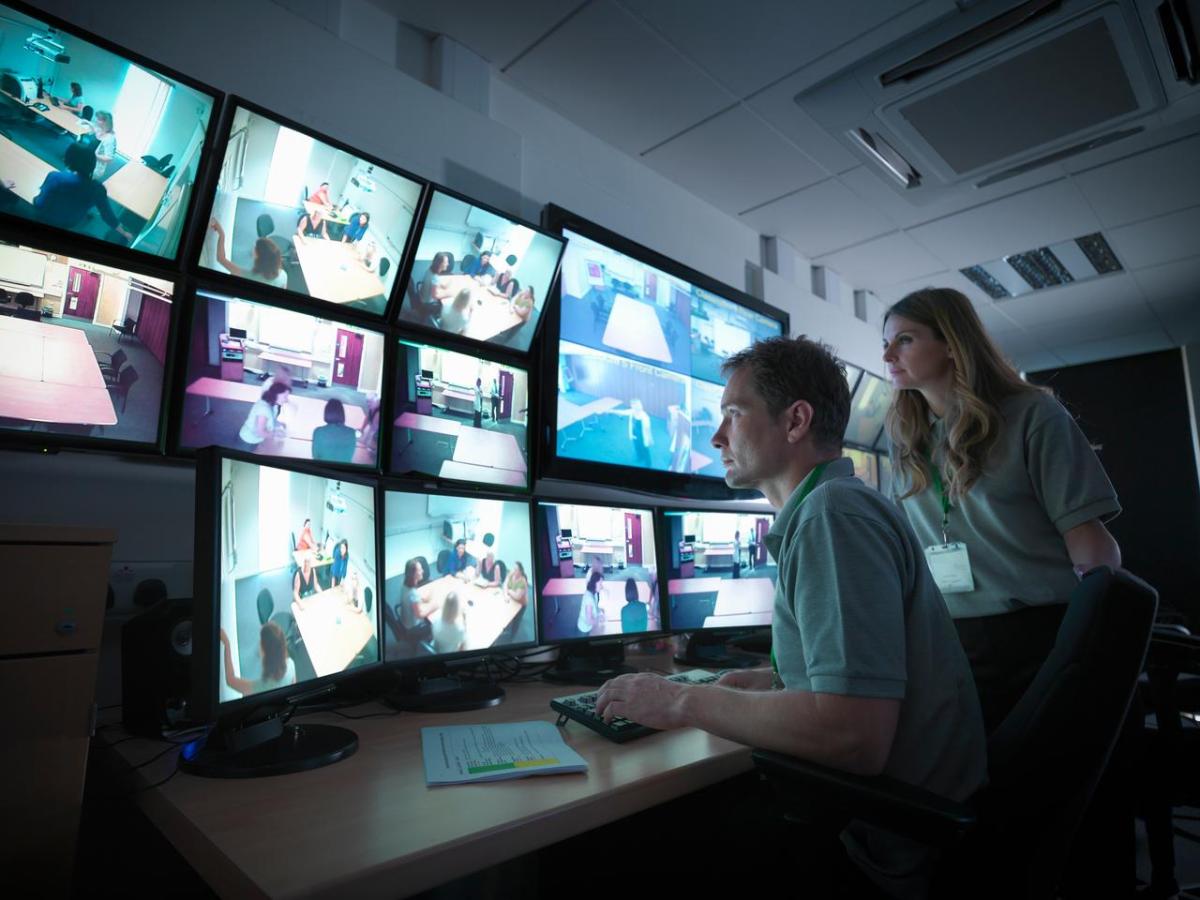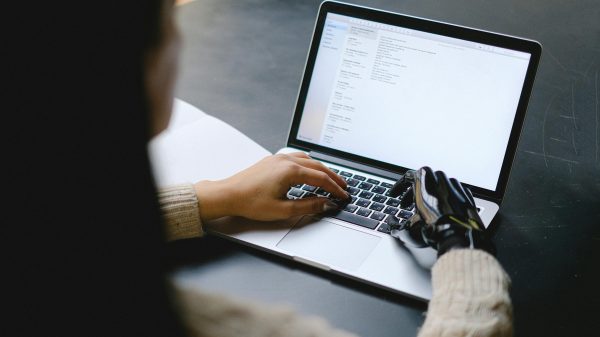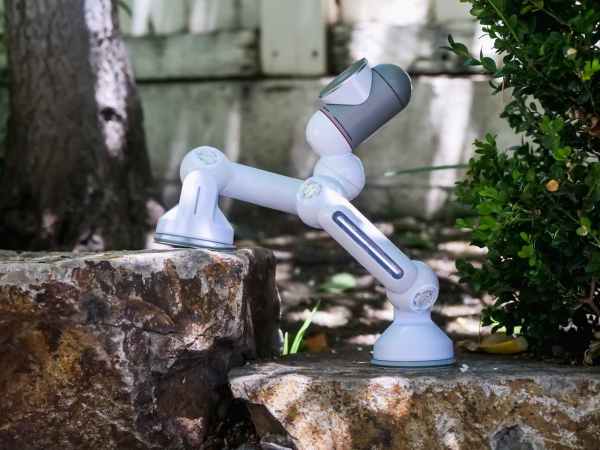Fifty years have passed since the first surveillance robot was developed. In this article we tell you about the evolution of the surveillance robot, its current benefits, challenges and some success stories.
The prehistory of the (surveillance) robot: Shakey
Limiting a milestone such as Shakey to the area of surveillance and security may be unfair, but it is useful to illustrate the prehistory of the subject we are discussing. Shakey was built in the 1960s and became the first robot that was able to understand and reason about the environment in which it moved. Its creators were a team of engineers at the Stanford Research Institute (SRI) founded and led by Charles Rosen, considered one of the pioneers of artificial intelligence.
Shakey was a milestone in robotics and artificial intelligence, which until now had only been developed in separate, individual areas. Shakey was the first hardware to integrate them into a physical system. The project, funded by the Defence Advanced Research Projects Agency (DARPA), which is responsible for developing new technologies for military use, consisted of a monumental two-metre-tall device, whose head was a TV camera and a telemetric camera to check the environment, as well as a radio antenna.
Shakey was able to create maps of the environment in which it moved and autonomously calculate the shortest path between two points. This was undoubtedly one of the great milestones in robotics and artificial intelligence: it is known as ‘Search Algorithm A’ used, for example, in the Curiosity rover, launched on Mars in 2011.
Shakey became the first autonomous robot with the ability to perceive and reason about its environment. The foundation stone had already been laid. Today, surveillance robots not only recognise the area in which they are moving and the obstacles in their path: they now even carry high-resolution cameras, motion and temperature sensors, all to anticipate the threat.
The present of surveillance robots
Fifty years later, we find Yellow, a robot dog with artificial intelligence, which integrates with other advanced security devices and has numerous features and services. Presented throughout different events in 2022 and developed by the company Prosegur Security, the Yellow robot has the following features:
- 5G technology: the threat warning to the control centre is reduced to a minimum thanks to the speed and low latency of 5G technology, which comes to revolutionise the IoT as we know it.
- Analytics systems to detect suspicious elements and generate alerts accordingly. Sensors to collect data from the environment in which they move, such as temperature or possible gas leaks, thus anticipating possible fires or explosions.
- Escorts people to prevent safety risks.
- It goes up and down stairs: it is not only able to travel on level ground.
Another success story in current robotics in the area of security is RB-WATCHER, created by the company Robotnik, a Spanish company specialising in the development of robotic products and R&D projects based in Valencia. The RB-WATCHER is an “autonomous mobile robot for security and surveillance in indoor and outdoor environments”.
From a robot like RB-WATCHER we can tell some of the main benefits that a company can have thanks to these intelligent autonomous devices.
- Always operational. Undoubtedly, one of the great strengths of the robot compared to human labour: the absence of fatigue. As no breaks are required, surveillance can be uninterrupted. This ensures continuous safety and minimises risks.
- Data recording and analysis. The surveillance robots collect and store a large amount of data in real time. All this data is then analysed to find patterns and improve security protocols. In other words: by collecting anomalies and incidents, patterns can be built to anticipate these same anomalies and even prevent them from occurring in the first place. They are able to ‘see the future’.
- Hazard prevention. Perhaps this feature may be a little obvious, but it never hurts to point out: surveillance and security robots can anticipate dangers in a way that is not possible for humans.
- Speed and precision. When anticipation of danger is not possible, only immediacy remains. Surveillance robots, thanks to their mobility and communication with the control centre.
Ethical challenges of surveillance and security robots
Any mass collection of data poses an ethical dilemma. We can see this in a very clear case. We move to the Meiyuan residential area in Beijing (Tokyo). A new police officer patrols the streets 24 hours a day, a 5’7″ robot with facial recognition, developed by the Beijing Aerospace Automatic Control Research Institute (BAACI).
The robot combines different technologies, such as biometric identification, mass data analysis and environment monitoring. If a person appears suspicious, the robot sounds an alarm. In addition, the robot offers other more friendly services, such as weather forecasts and ambient music playback.
None of these machines, like humans, is free from mistakes and errors. We return to China to report on a not uncontroversial programme that rates citizens through a series of points awarded… or removed. The so-called social credit determines which citizens are eligible, for example, to take a flight. A system of artificially intelligent cameras performs a facial recognition of people in, for example, an airport. If they detect that they have too few social credits, they can be denied access to an aircraft.
The case of Dong Mingzhu
A curious fact shows how reliable the facial recognition system is in identifying individuals and linking them to activities of daily life. Dong Mingzhu is an actress and the public face of Gree Electric, a Chinese household appliance manufacturer. A bus was carrying an advertisement on the side of the bus with Mingzhu’s face on it. A camera caught the actress ‘running’ a red light. Obviously, it was not her, but her photograph. But the camera didn’t get that.
The actress was stopped at the airport, but it was quickly resolved and it all turned out to be a mistake. But the seed of doubt was planted: what if a similar mistake had been made by a less famous person? It is not only the collection of personal data from security bots that presents ethical problems. These devices are also vulnerable to hacking by cybercriminals, mainly due to planned obsolescence. By not updating its security firmware, the robot is exposed for cybercriminals to find a gateway, turning the robot into a potentially dangerous machine.










